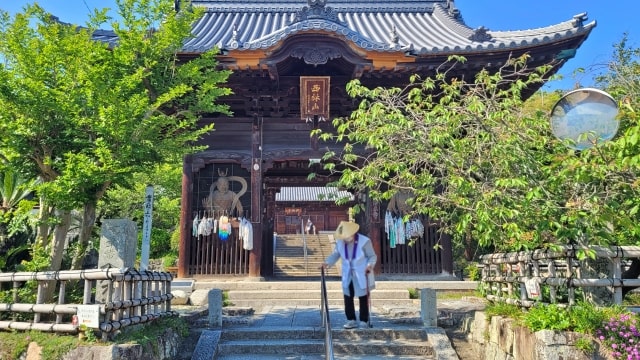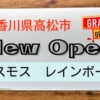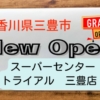【Japan tourism】 Shikoku 88 temple pilgrimage trip [No.49] Sairinzan Sanzouin Jyoudoji
Jodoji Temple is a temple that has a deep connection with Kuya Shonin, who was active in the middle of the Heian period.
Jyoudoji

| Principal image | Syaka Nyorai |
| Honzon mantra | Noumaku sanmanda bodanan baku |
| Denomination | Shingon Buddhism Busan sect |
Place
Temple lodging: none
Phone:089-975-1730
〒790-0925
1198 Takanokocho, Matsuyama City, Ehime Prefecture
Gosyuin(red stamp)
Please wait a moment until the image is uploaded.
History
From 729 to 749, Emyo Shonin enshrined a statue of Shaka Nyorai, which was carved by Gyoki, as the principal object of worship, as the temple of Emperor Koken, the princess of Emperor Shomu. At the time it was founded, it is said to have been a temple of the Hosso sect.
After that, when Kobo Daishi made a tour of this area, he revived the dilapidated temple and opened it to Shingon Buddhism, establishing it as the Shikoku sacred ground. It prospered enough to have 66 branch temples.
For three years from 957 to 961, Kuya Shonin also stayed here. Kuya Shonin is a monk who traveled around Shikoku and preached the importance of nembutsu and tried to educate the villagers. It is said that he repaired rough roads, built bridges, and dug wells to save the people.
In 1192 (Kenkyu 3), Yoritomo Minamoto and Michinobu Kono restored the pagoda.
Michinobu, Ippen’s grandfather, was a powerful clan in the west, but he sided with the Genji clan and participated in the Battle of Yashima and the Battle of Dannoura, leading the navy. He became a powerful vassal of the shogunate, but once declined around the time of Ippen, he regained power after that and the Kono clan became the shugo daimyo of Iyo.
In 1416 (Oei 23), the temple was destroyed by fire. However, it was rebuilt by the feudal lord Michinobu Kono between 1469 and 1487, and the current main hall dates back to that time.
The inner shrine has graffiti from the first half of the 16th century, including the word ”Henro," which is a valuable historical resource for learning about the history of the pilgrimage.
Highlight
【graffiti】 In the main temple shrine, there is a graffiti that seems to have been applied from the Muromachi period to the Edo period. It is one of the precious historical materials.
【Statue of Kuya Shonin】The temple enshrines a statue of Kuya Shonin, which is said to have been made by Kuya and is famous as a masterpiece of wooden portrait sculpture. Six small Amida Buddhas are appearing from the mouth of a slim shonin who holds a cane in his left hand and strikes a gong with a stick in his right hand while chanting “Namu Amida Butsu". A designated important cultural property of the country.
It is about 2 km (about 5 minutes by car) to the next 50th bill place “Hantaji"!










